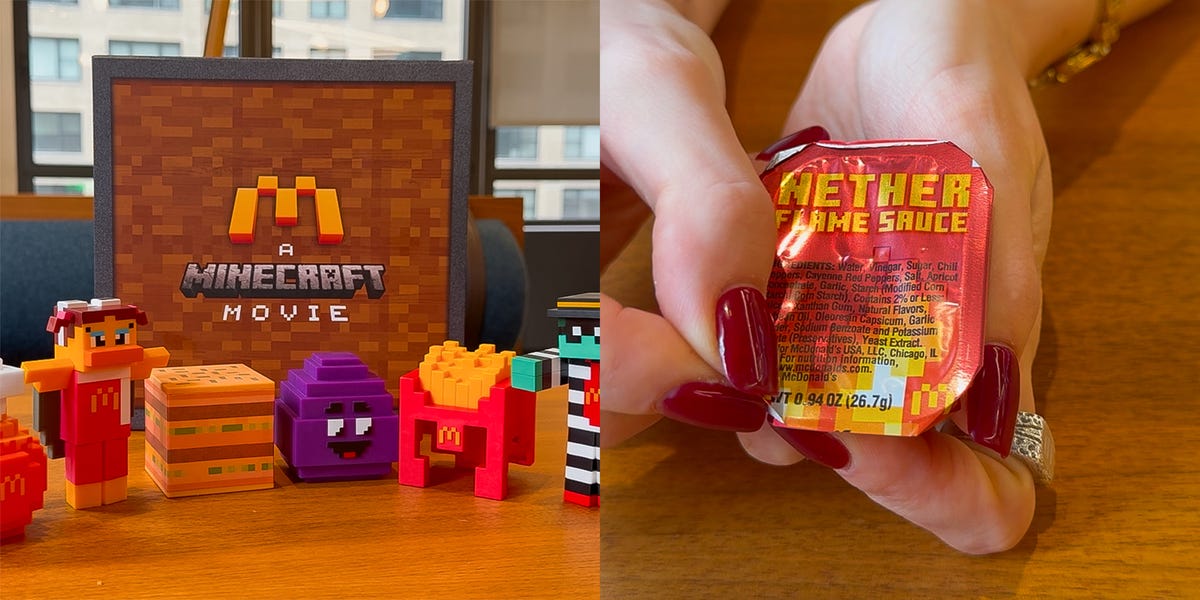When To Drink Every Type Of Carbonated Water, According To A Bartender
As someone who has tested and reviewed her fair share of carbonated water, I can tell you that the category can get pretty confusing. Labels will use the terms sparkling water, mineral water, seltzer, club soda—the list goes on (and that’s not even including the flavored options). People often use the same terms interchangeably and just reach for the product with the coolest packaging or lowest price point.
But, if you want to get technical, they are all different products that serve different purposes. That’s not to say that I’m going to be the carbonated water police; they’re all similar enough that you can use them however you want. However, it is still worth knowing the difference so you can choose the best bubbly water option for yourself. Here’s everything you need to know.
Let’s start with the simplest option. Seltzer is made with just two ingredients: purified water and carbon dioxide. Producers will typically gather water from a variety of sources, then purify it to make a consistent, neutral-tasting product. Some popular brands include Schweppes, Hal's, and Polar.
The fact that seltzer is essentially tasteless makes it a great choice for a cocktail mixer. Without any added minerals or flavors, you can let the other ingredients in your mixed drink shine. Brands will also often supplement seltzer with different flavors for casual sipping.
Since the water is purified anyway, brands can source their water from pretty much anywhere—and they often opt for tap water. This means that the finished product tends to be cheaper than other types of carbonated water.
Club soda is nearly identical to seltzer, with one notable difference. They both use purified water and carbon dioxide. What makes club soda distinct is that producer add minerals back into the product. Why, you may ask? It’s all about the flavor.
This is exactly why people say different brands of water taste different. Depending on the minerals brands use, the water can be soft or crisp, sweet or salty, metallic or earthy. Club soda recipes will vary by producer, but you can typically expect to find compounds like sodium bicarbonate, potassium sulfate, and sodium chloride (A.K.A. table salt).
Club soda brands include Fever Tree, Seagram’s, and many of the same companies that also sell seltzer. It’s still mostly water, so the difference in flavor will be subtle. But there’s usually a slight salty note—that’s why it’s what bartenders usually reach for when making cocktails. Salt amplifies the flavor of other ingredients and has electrolyte properties. In club soda, the salt content will make any drink taste more refreshing than if you use plain seltzer (but the difference is so small that you can use them interchangeably and no one will notice).
Products labeled as sparkling mineral water (or simply sparkling water) usually sit at the higher end of the price spectrum. And there’s a big reason why. What makes sparkling water special is where they source the water.
Man-made carbonated water was invented on accident in the 18th century, but springs all over the world have been naturally carbonated for millennia. Although the vast majority of brands supplement their product with more CO2, people still drink water from mineral springs because of the way it tastes.
Each individual spring has a unique combination of minerals that create a distinct flavor, a term called terroir. Sparkling water brands will filter the water just until it’s safe for human consumption while retaining the mineral-based terroir as much as possible. Think of it like wine—a pinot noir from France doesn’t taste the same as one from Napa Valley because the grapes are grown in different soil and in different climates.
Let’s apply that same logic to mineral water. Splendor, which sources their water near Ecuador’s Cotopaxi volcano, has a subtle mineral content mostly comprising calcium; this makes the water taste sweet and almost milky. On the other end of the globe, there’s Vichy Catalan, which gets its water from a highly mineralized spring in Girona, Spain. The spring’s high concentration of sodium makes the water taste notably salty.
The springs make sparkling water unique and more expensive. The point of drinking it is to taste and enjoy those minerals, which is why sparkling water is best enjoyed on its own. The flavors will be mostly hidden when used in a cocktail—so don’t waste your money and use a cheaper carbonated water instead.
Tonic water is often confused with club soda by the uninitiated drinker, but surprise! It’s not really a carbonated water at all. Tonic water is actually closer to a soda because it’s sweetened and flavored with minerals and botanicals. The most notable botanical is quinine—an alkaloid extracted from the bark of the cinchona tree.
Quinine is a natural medicine that can fight malaria and has a distinctly bitter flavor. Tonic water was created specifically to make quinine taste more palatable. But don’t be mistaken: you can still definitely taste it. You likely won’t find anybody drinking it on its own. Instead, it’s commonly used as a cocktail mixer.
Expertise: TikTok Trends, Drinks, Pop Culture
Education: B.A. in Journalism and B.S. in Communications from NYU, Culinary Arts degree from The Institute of Culinary Education
About Me: As an associate editor at Delish, Gabby works on everything from features to recipes to content on our social media channels. Before joining the team, she wrote for StarChefs Rising Stars Magazine, Mashed, and Food52. When she’s not developing cocktail recipes, she’s making cocktail-inspired dishes like Dirty Martini Pasta and Aperol Spritz Trifle. Her features cover online trends like the Millennial Shopping Cart, rank everything from hard seltzers to frozen French fries, and answer some of your most pressing food safety questions. You can also find her posting content on Delish’s TikTok, including her three-part series about cooking like influencer Nara Smith that garnered over 3M combined views. She loves eating spicy food, collecting cookbooks, and adding a mountain of Parmesan to any dish she can.














